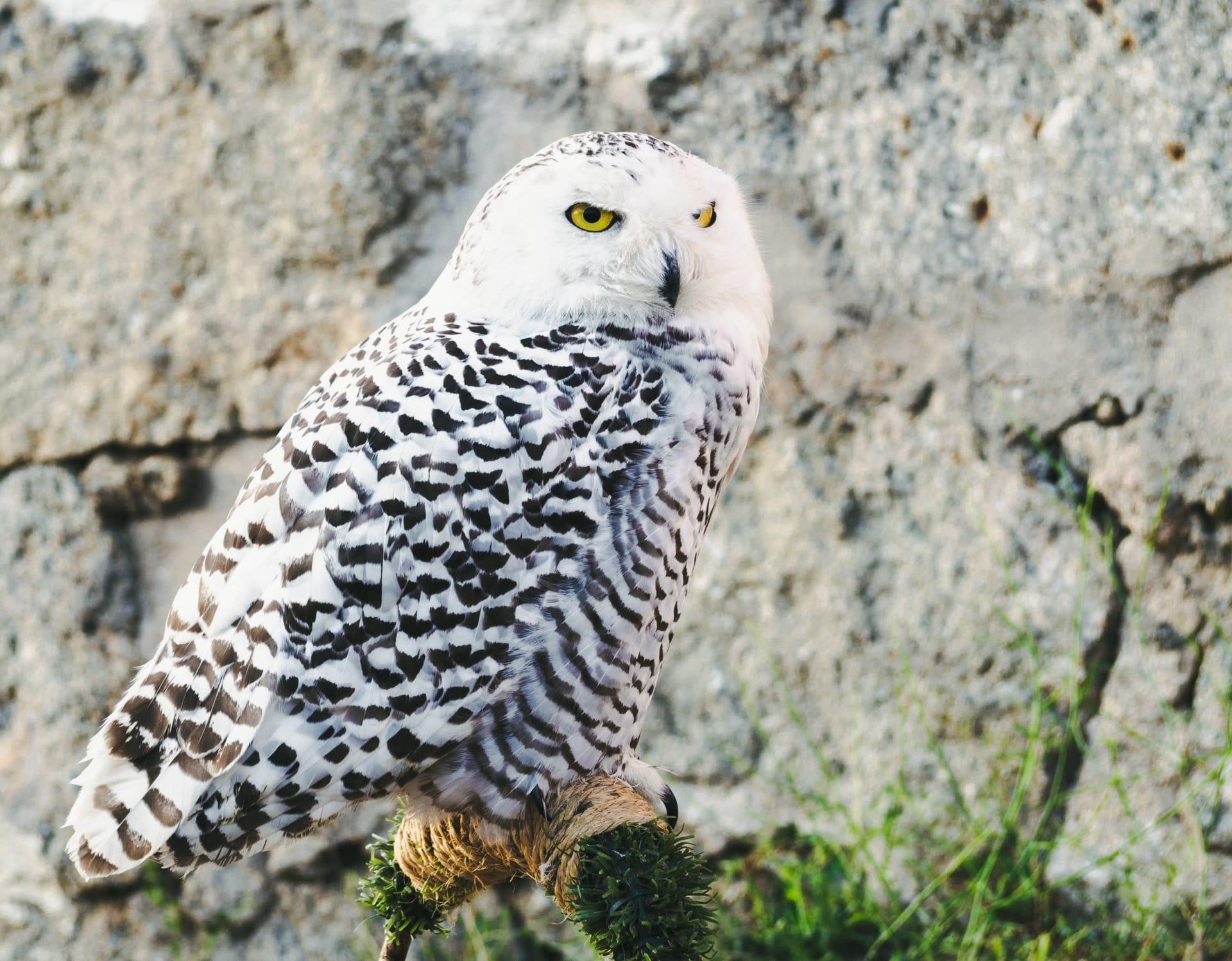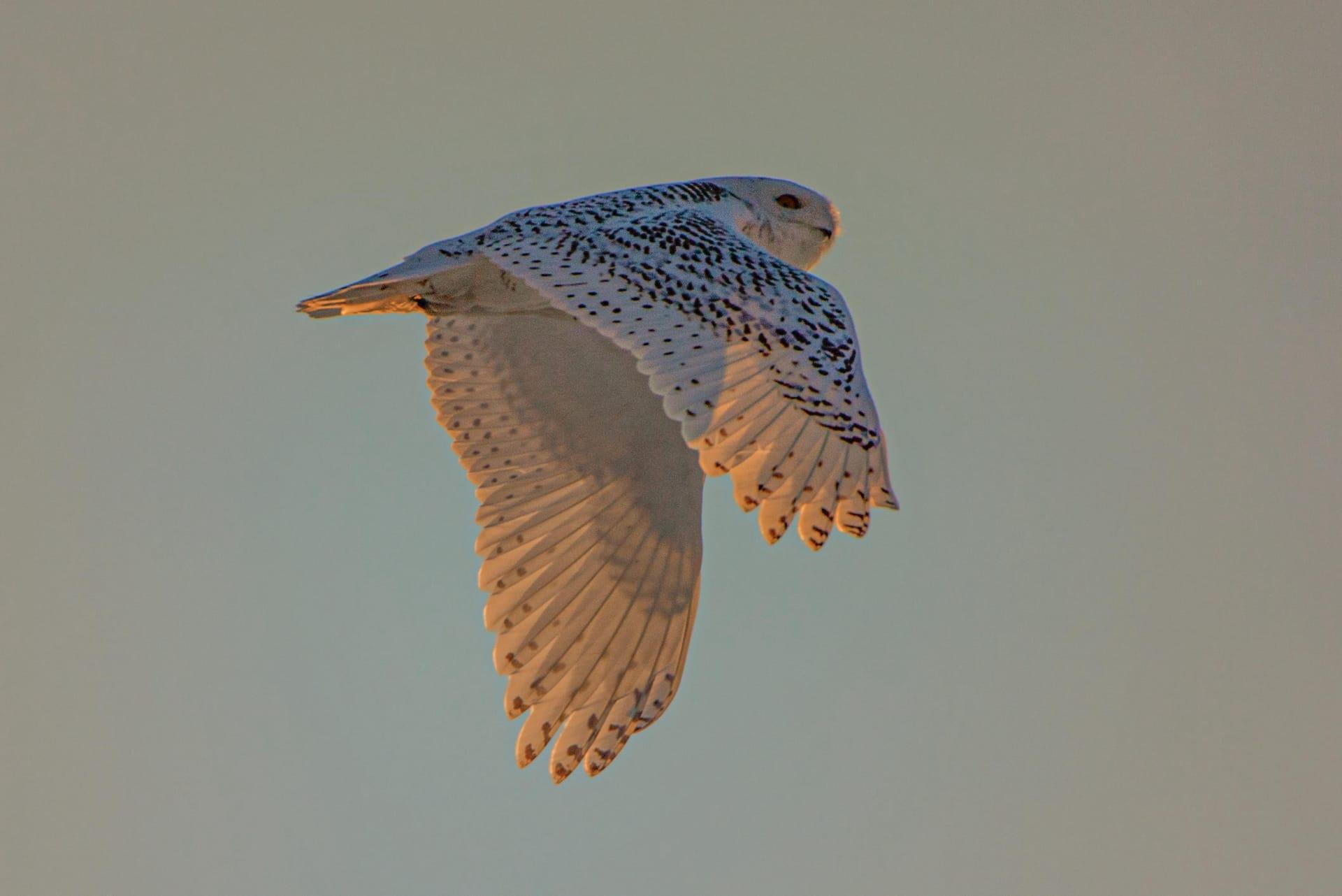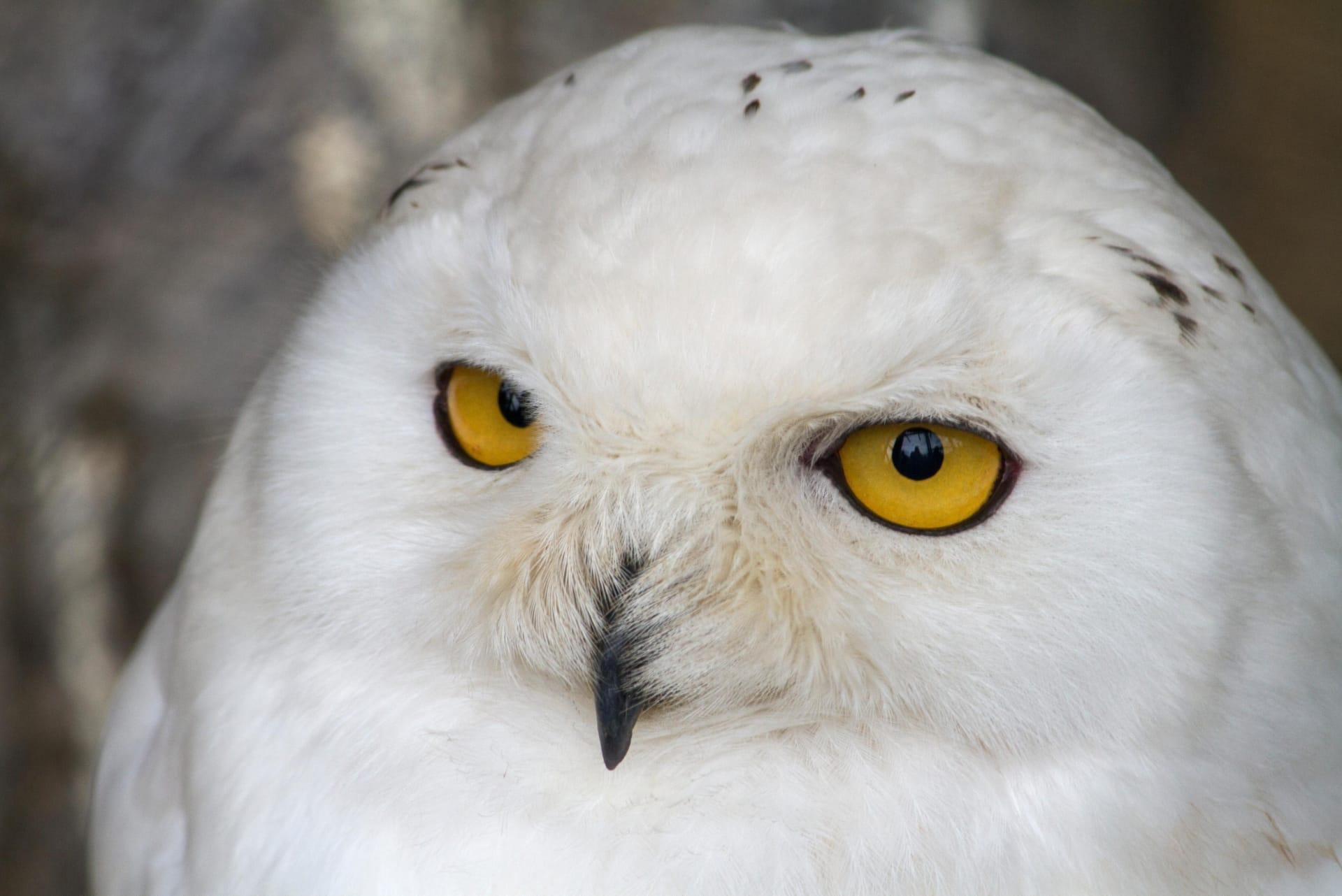Snowy Owl
- Home /
- Mini Encyclopedia /
- Animal /
- Snowy Owl
1
The Snowy Owl, scientifically known as Bubo scandiacus, is a fascinating species belonging to the family Strigidae, which includes other owls. This majestic bird is easily identifiable by its large size and striking white plumage, which helps it blend into its snowy habitat. Male Snowy Owls are generally whiter than females, who display more dark markings on their feathers. These owls have a wingspan that can reach up to 4.8 feet (146 cm), making them one of the largest owl species. Additionally, they are equipped with keen eyesight and sharp hearing, essential for hunting in Arctic conditions.
The Snowy Owl is primarily found in the Arctic regions of North America and Eurasia. During breeding season, they inhabit open tundra, where they nest on the ground. In winter, some migrate southward, reaching as far as the northern United States. These migrations are not regular, and in some years, larger numbers of Snowy Owls are seen further south than usual, a phenomenon known as an 'irruption'. These irruptions are thought to be linked to fluctuations in their primary prey populations, particularly lemmings and voles. Their habitat choice is influenced by the availability of prey and the need for open areas to spot and swoop down on their targets.

2
Question: Do Snowy Owls exclusively eat fish, given their Arctic habitat?
Answer: Contrary to popular belief, Snowy Owls do not primarily feed on fish. Their diet is predominantly based on small mammals, particularly lemmings and voles. A single Snowy Owl can consume up to 1,600 lemmings in a year, showcasing their importance as a food source. These owls are opportunistic hunters and may also prey on rabbits, birds, and fish if available. Their hunting strategy involves patiently watching from a high perch before swooping down on unsuspecting prey. In the harsh Arctic winter, when prey is scarce, Snowy Owls have been known to expand their diet to include carrion.

3
Snowy Owls have adapted brilliantly to the harsh conditions of the Arctic. Their thick plumage not only provides camouflage against the snowy background but also insulates them against extreme cold. They have feathered legs and feet, acting as natural snowshoes and additional insulation. Snowy Owls are diurnal, meaning they are active both day and night, which is advantageous during the Arctic summer when daylight lasts for 24 hours.
These owls are territorial and solitary, except during the breeding season. They lay 3 to 11 eggs, depending on food availability, and both parents are involved in raising the young. The male provides food while the female guards the nest. Young Snowy Owls learn to fly at about 50 days old but remain dependent on their parents for several months. One unique survival strategy is their ability to store excess food in caches, a useful adaptation for surviving the unpredictable Arctic climate.

4
In the Arctic ecosystem, the Snowy Owl plays a crucial role as a predator. They help control the populations of small mammals like lemmings and voles, which can experience population explosions if left unchecked. By keeping these populations in balance, Snowy Owls indirectly contribute to the preservation of tundra vegetation, which these small mammals feed on.
Snowy Owls also impact the behavior of other predators and prey in their ecosystem. For instance, their presence influences the foraging patterns of other bird species. Additionally, they are indicators of environmental health. Changes in their population and distribution can signal shifts in the Arctic ecosystem, often related to climate change and human activities.

5
Film: "The Magic of the Snowy Owl" is a documentary released in 2012 by PBS Nature in the United States. This film provides an intimate look into the life of the Snowy Owl, capturing rare footage of these elusive birds in their Arctic habitat. It explores their survival tactics, hunting skills, and the challenges they face in the extreme conditions of the north.
Book: "Snowy Owl: Amazing Photos & Fun Facts on Animals in Nature" by Kay de Silva, published in the United States in 2015, is an engaging and informative book designed for young readers. It provides a comprehensive overview of the Snowy Owl's life, habitat, and role in the ecosystem, with vivid photographs and easy-to-understand language.
Book: "Owls of the World: A Photographic Guide" by Heimo Mikkola, published in the United Kingdom in 2012, includes a detailed section on the Snowy Owl. This book offers a global perspective on various owl species, with emphasis on identification, biology, and conservation. The section on Snowy Owls is particularly rich in scientific information and stunning photography.